Archive for December 19, 2013
Forestry work in the Alder Seep
FORESTRY: 2.5 hours: 3:00 PM to 5:30 PM
Pre-commercial thinning, pruning and general clean-up in the Alder Seep and Cedar Shake Park in Eastern Wedge unit #5.
Forestry portion of new trail establishment in Eastern Wedge unit #5. Mostly thinning and pruning in the Alder Seep. Completed the section above the trail (top of the seep) up to the eastern property line. The alders have few, widely spaced branches, many of which are dead and pop right off. Most branches are small, as these alders are growing close enough to shade out the understory. A power pole pruner is needed to get the more numerous live branches higher up. Now is the perfect time to create a clean bole for peeler logs – the trees are tall enough (at 16 years old) to allow pruning of all branches that can be reached (up to about 16 feet) – just one lift (pruning) during the life of the tree. Continued pruning alder limbs and felling suppressed and deformed alders, hemlock and Doug fir from the Alder Seep up over the south bank into the next wet zone. Old cedar stumps and remnants of shake bolt cutting are everywhere in this unit.
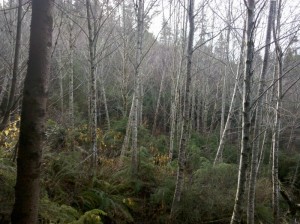 Mostly self-thinned 16 year-old alder in the Alder Seep.
Mostly self-thinned 16 year-old alder in the Alder Seep.
This area was clear-cut sixteen years ago and replanted in Doug fir. Only one Doug fir is visible in the photo (the dark tree trunk on the left hand side), as the naturally regenerated alder quickly captured this wet site and shaded out the fir.
Cut down a few suppressed, bent-over and broken-topped alder, and pruned the low branches. This stand is in surprisingly good shape after surviving the Great Coastal Gale of 2007, and the natural spacing is about right for their age.
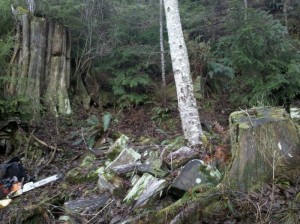 Cedar shake bolts and old cedar stumps in the Alder Seep.
Cedar shake bolts and old cedar stumps in the Alder Seep.
There are old-growth Western Red Cedar stumps and logs all throughout Eastern Wedge unit #5. The forest floor is littered with the rectangular chunks (bolts) cut out of the cedar for shingles or roof shakes. This remnant cedar was highly sought after in recent decades by salvagers looking for the tight, straight grain and rot resistance found only in centuries-old wood.
Now covered in moss and lichen, there’s no telling how long ago these were cut out of the old cedar logs and split into chunks that could be hauled away on foot. Perhaps these chunks were rejects, or the cutters never came back to claim them. In any case, there are hundreds of these strewn over many acres in Eastern Wedge unit #5. Hence the name “Cedar Shake Park”!
Continue Reading | Comments Off on Forestry work in the Alder Seep
Trail creation through the Alder Seep
TRAILS: 3.5 hours: 11:30 AM to 3:00 PM
Trail creation through the Alder Seep and Cedar Shake Park in Eastern Wedge unit #5.
Trail creation in Eastern Wedge unit #5. Continued along the northern edge of Alder Seep, cutting through the dense brush and cull trees just below the line of old stumps. Rounded the corner and cut a route across the seep, using some cedar shake bolts as stepping stones across the broad wet zone. Continued up the bank on the southern side of the seep, heading south about a hundred feet towards the next, smaller wet zone – stopped due to darkness. Also discovered the eastern property line at the top of the Alder Seep – it is well-marked, with a rough surveying trail running along it – should return to this and do additional clearing for long-term maintenance along the line.
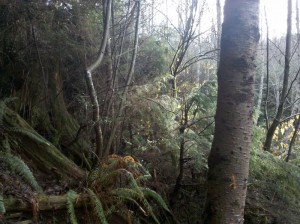 BEFORE (11:50 AM): Trail section to be blazed along the north edge of the Alder Seep.
BEFORE (11:50 AM): Trail section to be blazed along the north edge of the Alder Seep.
Heavy brush and suppressed trees dominate this proposed trail section. Not the easiest way to route this trail, but it will run along the contour, highlighting a line of ancient cedar stumps on the uphill side and avoiding a steep drop to the wet area on the downhill side.
The “Alder Seep” is a wide , gently sloping depression in the hillside where water is oozing out from all sides, populated by young alder trees.
AFTER (1:24 PM): Trail opened up along the north edge of the Alder Seep.
Still a fairly rough terrain that will need to be carved out with a shovel and mattock to create a final grade.
Note the old stumps on the uphill side and the removal of suppressed trees along the route. Also pruned the low, dead branches on the remaining trees. Left the hemlock thicket intact above the stumps for wildlife cover.
Continue Reading | Comments Off on Trail creation through the Alder Seep

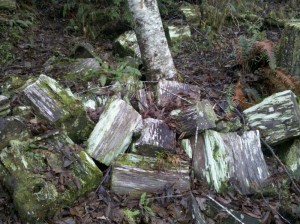
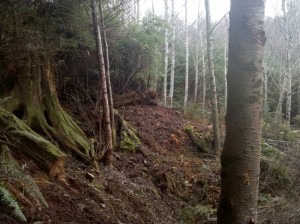
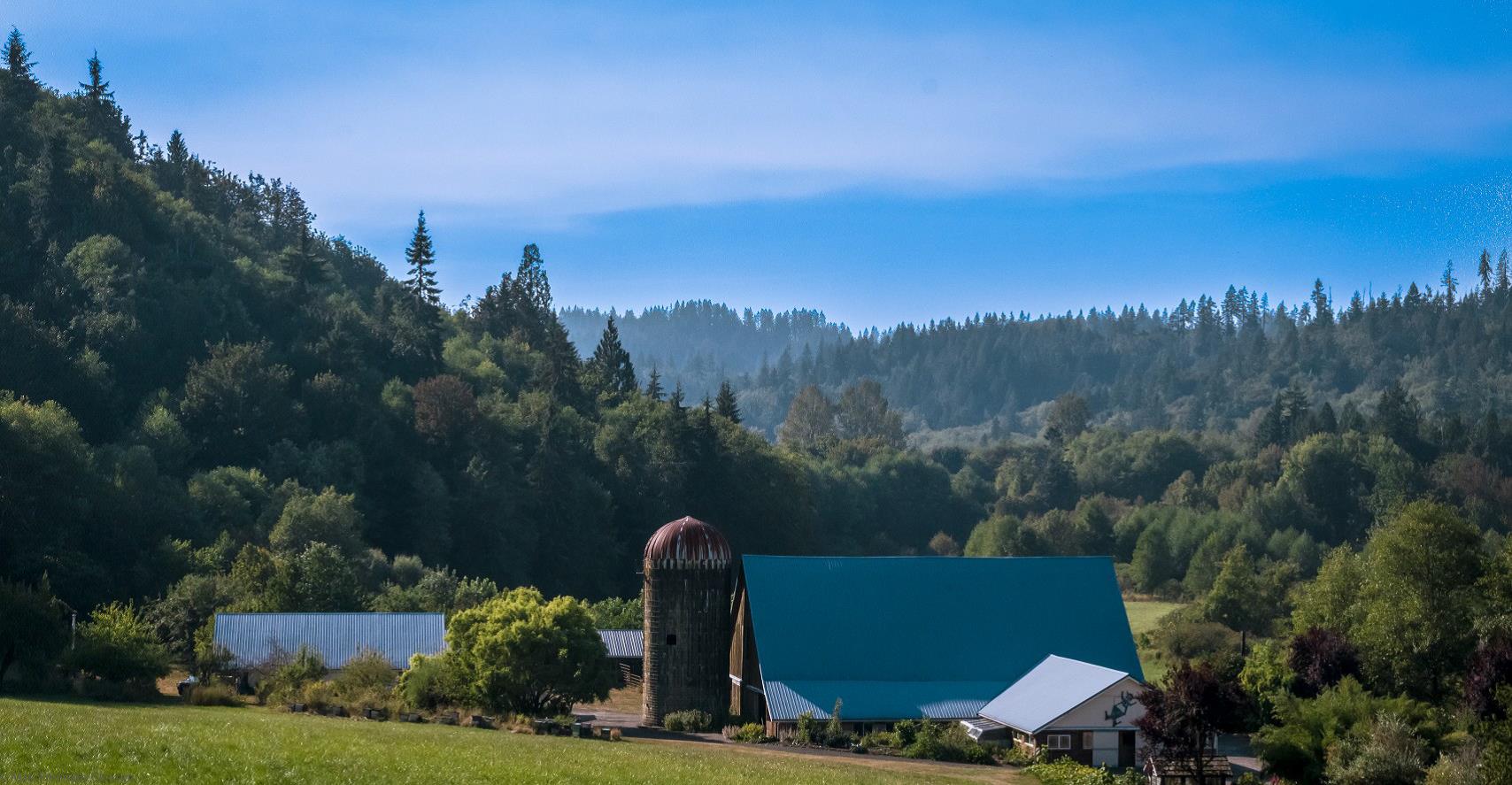


 Spirulina
Spirulina